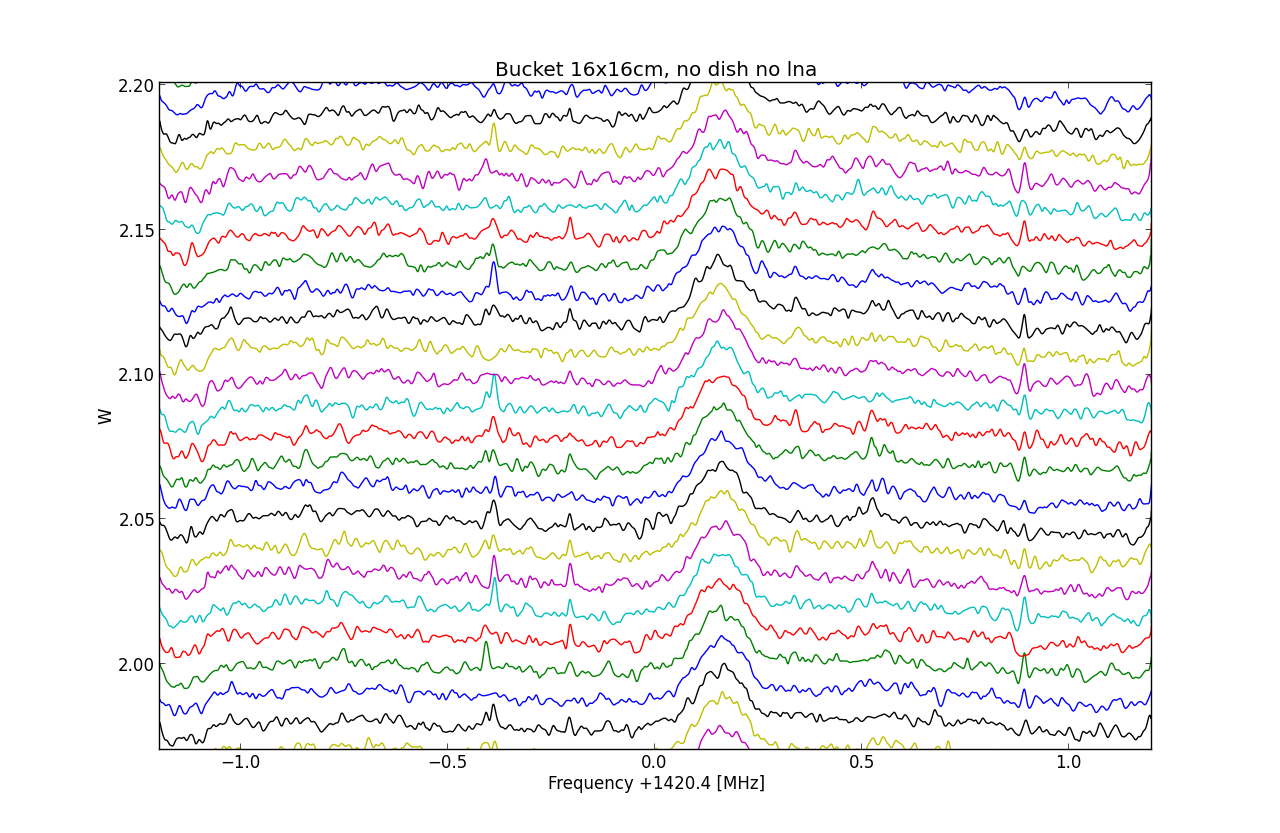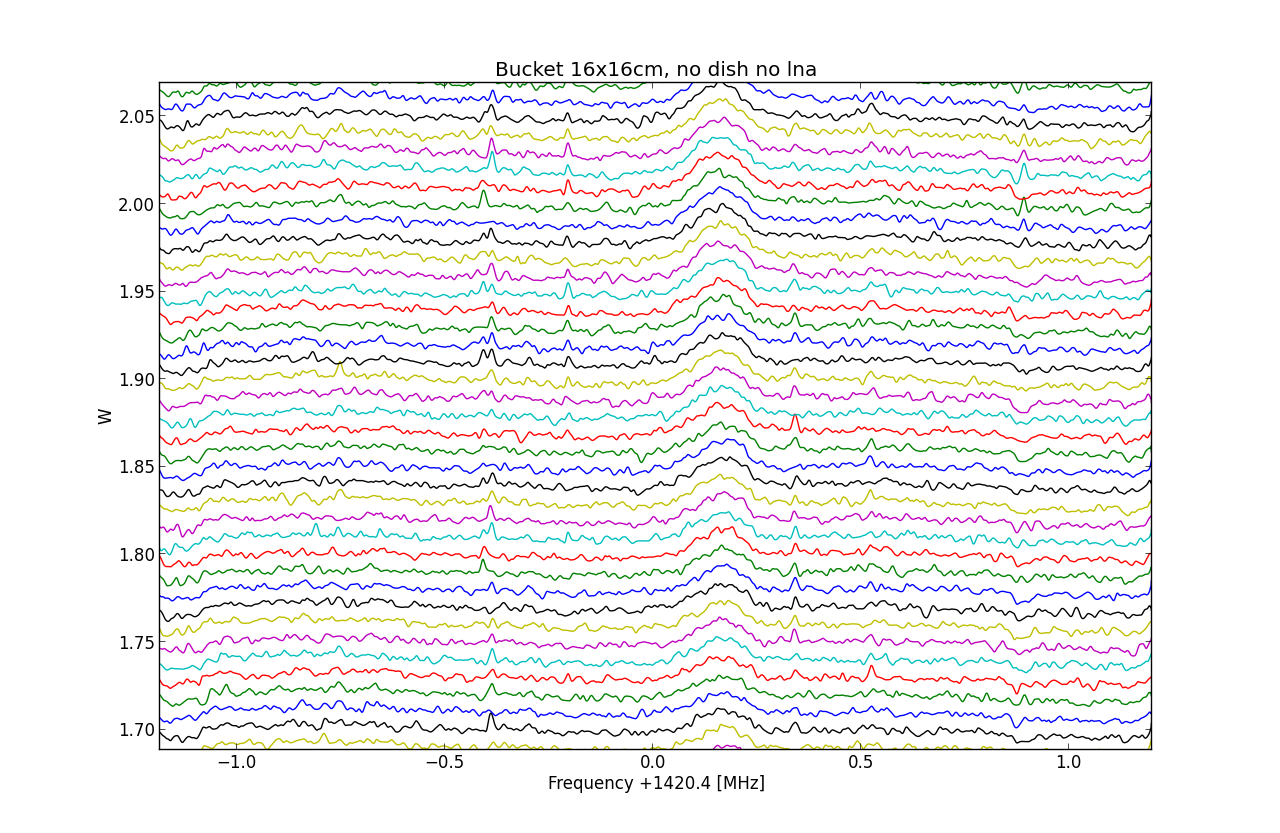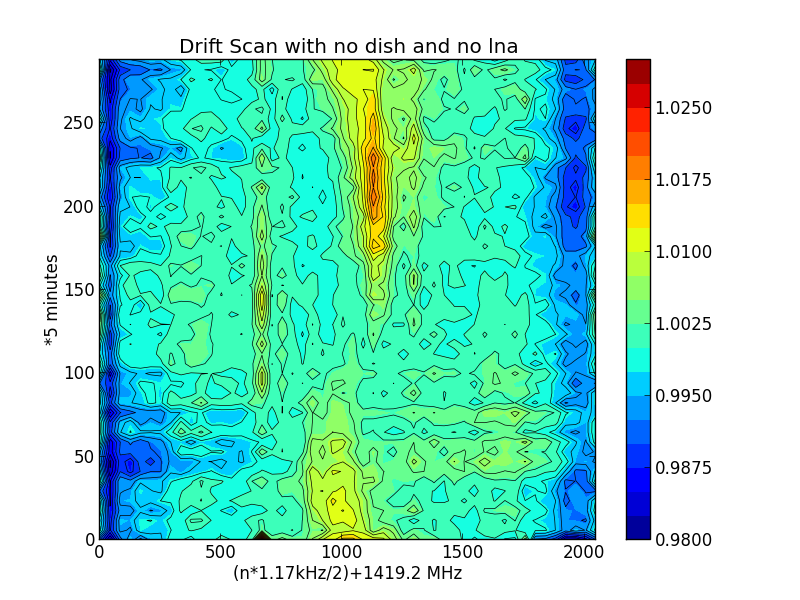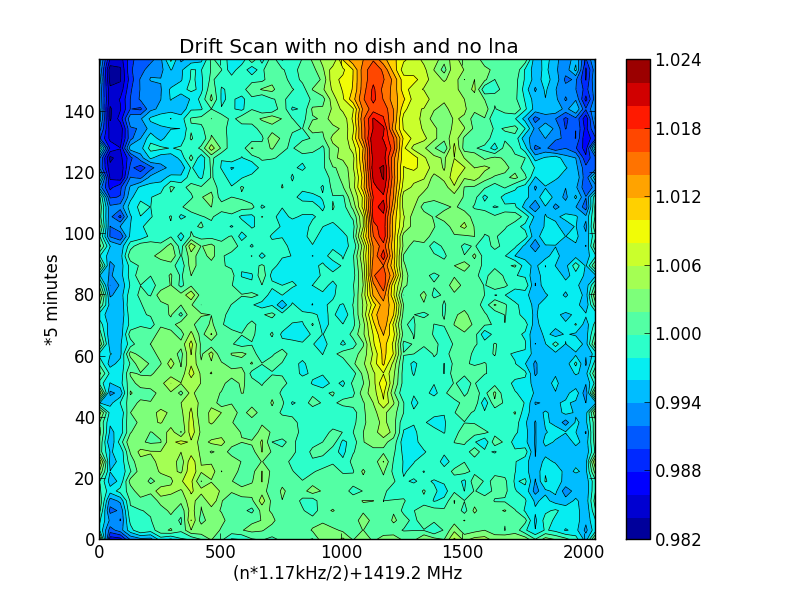

[HOME]
[WEB ALBUMS]
[PROJECTS]
[ARCHIVE]
[DOWNLOADS]
[LINKS]
PROJECTS
Project MK9: 21cm neutral hydrogen receiver with no dish and no LNA
With the RTL dongle it is possible to listen to radio frequencies ranging from 23.6MHz opto 1700 MHz.
The dongle was intended for use as a universal low cost (20euro) television receiver.
However soon it appeared that the receiver could be used also for amateur radio reception, and much more.
This project is dealing with the use of this receiver for radio astronomy.
On the inet a lot of 21cm receiving systems can be found, however this project shows that it is also possible with minimal hardware and software.
No dish and no expensive LNA (low noise amplifier) is needed.
The antenna feed can is a paint bucket from a hardware store (3 euro's). The 3 amplifiers are standard sat tv inline amplifiers, and the receiver is again a RTL dongle.
The software used is again the free cfrad2.exe (see download section). Sample rate 2.4MS/s, integration time was 90s per line. New line every 5 min.
The output table is a frequency spectrum, which can be read into Excel, or Python(xy).
Plotting sw; pythonxy ( see download section). No dongle frequency correction set.
Machine; Wxp 1.8GHz.
Start of measurement 20-04-2015 @21:07UT stop 21-04-2015 @10:16UT. Location 52N,5E. El 90 deg, Az na.
Flowers not mandatory.
In this way you can test your antenna feed and improve your system.

Fig.1 - Flowers not mandatory.
Bucket can antenna details; topdiam 16cm, bottom diam 14.5, hight 16cm, probe distance from the bottom 7cm, probe lenght 4.8cm, probe diam 8mm.
The probe was soldered onto an N- connector. See to it that the base of the connector is not protuding on the inside surface of the bucket. To do this, insert enough large revets on the outside.
The probe itself is adjustable (see project nr MK3).

Fig.2 - Drift scan 157 lines of 5 minutes each.

Fig.3 - Drift scan detail 1.

Fig.2 - Drift scan detail 2.

Fig.2 - Contour 1.

Fig.2 - Contour 2.